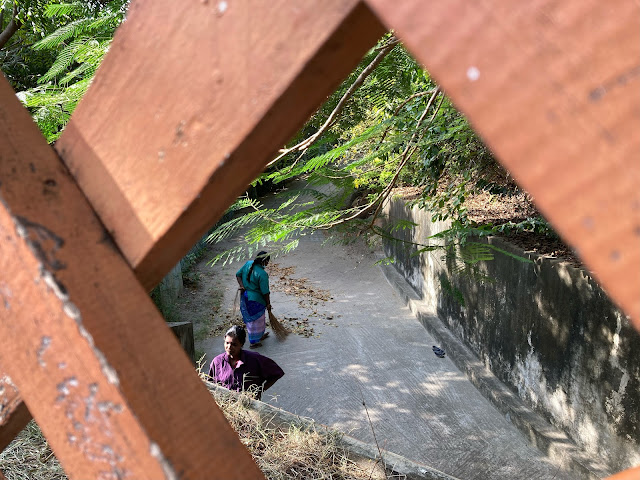Rebirth of the Adyar creek - Chennai - City - The Times of IndiaCHENNAI: Pied kingfishers, yellow wagtails, egrets, white bellied sea eagles, chestnut-winged cuckoos, black-winged stilts...
A waterbody, once a dumping site laden with tonnes of debris and gallons of sewage, has begun attracting migratory birds, thanks to the state's ambitious restoration of the ecologically sensitive Adyar creek. The Adyar Poonga Trust (rechristened as Chennai Rivers Restoration Trust (CRRT) recently) is racing against time to complete the first phase of restoration of the 58-acre stretch, one of Chennai's most eco-sensitive spots, before November this year.
"It was a filthy place, with debris strewn around. Cattle was being reared by neighbouring slum dwellers and anti-socials made merry in the area that was full of thickets. Initial assessment of the creek area was, in fact, done from the nearby high-rise structures because no one could enter the poonga (creek)," says an official associated with the project.
CRRT had to excavate 150,000 tonnes of construction debris and garbage from the site to create a water body embellished with earthern pathways, wooden bridges, signage and bamboo pavilions. About 91,280 plants of various species are being planted inside at locations such as the entrance plaza, swale area near Town Planning Scheme Road, on the rear side of Ambedkar Manimandapam and along Santhome entrance plaza. About 37,600 reeds are being planted along the water margins.
"Adyar poonga is a fulcrum for environmental education," says K Phanindra Reddy, member secretary, Chennai Rivers Restoration Project. As part of the educational reach programme, eco-clubs are being set up in neighbouring schools and colleges by the Trust. "Adyar creek will eventually become a model for restoration of water bodies, including Cooum and Adyar," Reddy claimed.
As part of the restoration, the CRRT also plans to have a green centre in the erstwhile fisheries building near Ramakrishna Mutt Road. "An audio visual room, environmental education centre, library to document creek activities, laboratory to check water quality, a souvenir shop, coffee corner, all form part of the centre," Reddy said. Restoration work will soon extend into the estuary spreading over an area of 300 acres.
Initially spearheaded by Chennai Corporation and supported by Tamil Nadu Road Development Company Ltd, this project was conceived primarily as an effort to restore the fragile eco-system of the Adyar estuary and creek and raise awareness among the public about the environment.
The estuary has been a topic of furious discussion among ecologists and environmentalists for a long time now. Adyar river, one of the three major waterways in Chennai apart from Cooum and Buckingham Canal, is where migratory birds flock the most. According to Madras Naturalists Society secretary K V Sudhakar, "the area where the river and the sea meet is a major feeding ground for birds as it is rich in many organisms. A few years ago, our society recorded the presence of over 200 different species of birds in the creek," he added.
But the restoration project is seen by critics as excessive development work around a natural ecosystem which needs to be left alone. "Restoration of the creek would mean bringing the creek back to its natural condition. I would like to call this a transformation project where an existing natural ecosystem is being engineered into a tourist spot," said Nityanand Jayaraman, a freelance journalist and an environmentalist. According to Nityanand, the marshlands of Adyar creek is being turned into an artificial freshwater ecosystem in the process.
On the other hand, Sudhakar, says the project is a step in the right direction. "All the trees being planted are native, and the people who have undertaken the work know what they are doing," he said. Referring to the massive real estate development that Chennai is witnessing, he said the ongoing measures would evoke interest in saving the creek. "With this project, you are bringing in the public, who will see what they are losing and take an interest in saving it . Awareness is very important."
























 A painted stork in the Adyar Poonga on Friday. — Photo: K.V.Srinivasan
A painted stork in the Adyar Poonga on Friday. — Photo: K.V.Srinivasan









